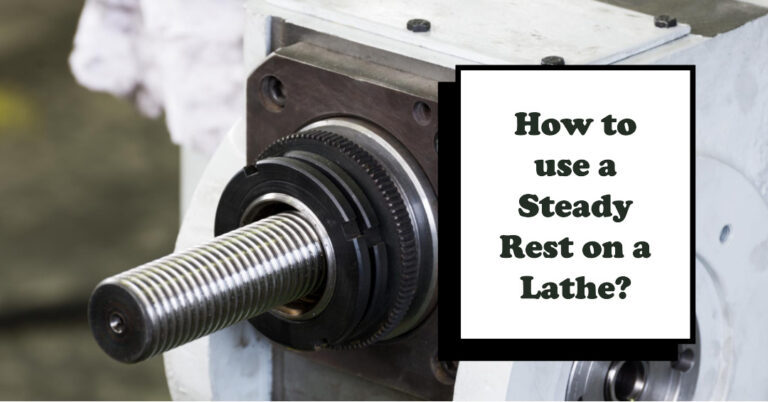Wood Lathe vs Metal Lathe

Woodworking and metalworking are timeless crafts. They’ve shaped our world, giving us everything from art to essential tools. Central to these crafts is one key tool: the lathe. When you’re torn between choosing a wood lathe or a metal lathe, understanding their differences is crucial.
Join me on this exploration. We’ll dig into the unique features, strengths, and functions of each type. This isn’t just a side-by-side comparison; it’s a deep dive into two distinct worlds. By the end, you’ll know which lathe is the perfect fit for your projects.
What Is a Wood Lathe?
A wood lathe is your go-to machine for shaping wood. Think of it as the backbone of any woodworking shop. It spins wood at different speeds, letting craftsmen carve, shape, or design with ease. Whether you’re crafting elegant table legs, intricate bowls, or musical instruments, this tool has stood by artisans for centuries, serving as a canvas for creativity.
What Is a Metal Lathe?
In the world of metalwork, the metal lathe reigns supreme. It’s stronger and more versatile than a wood lathe, designed for shaping hard materials like metals. This tool is essential for making machine parts, crafting tools, or even creating intricate art. When you need precision, strength, and durability, the metal lathe delivers, working carefully to achieve perfection.
Difference between Wood Lathe and Metal Lathe
- Function: Wood lathes are mainly for artistic projects like decorative bowls or furniture parts. Metal lathes, however, are geared towards creating precise, functional parts like gears and bolts.
- Size: Wood lathes are generally compact, fitting well in home workshops. Metal lathes are bulkier, designed to handle more complex materials and ensure stable operation.
- Speed Control: Speed control on wood lathes is straightforward, accommodating various wood types and carving needs. Metal lathes offer more advanced speed control to handle harder materials and intricate tasks.
- Tool Holding: With wood lathes, you’ll hold the tools manually to carve your piece. In metal lathes, tools are mounted on a carriage and can be moved either manually or automatically for precise cuts.
- Accuracy: Metal lathes are all about precision. While wood lathes can create beautiful work, they don’t demand the same level of accuracy as metal lathes do, especially when making functional parts.
- Cost: Wood lathes are generally more budget-friendly, great for hobbyists and beginners. Metal lathes, given their advanced features, tend to be pricier but offer value for professionals needing precision and versatility.
Woodworking on a Metal Lathe – Is it Possible?
Yes, you can use a metal lathe for woodworking. But it’s like using a sports car for a grocery run doable, but a bit over the top. Metal lathes excel in precision and can handle tough materials. Using one for woodworking brings its rigidity, power, and accuracy into play, which can be handy for detailed work.
Just be careful. The sharp tools and high speeds can damage delicate wood if you’re not cautious.
Characteristics of a Wood Lathe
Flexibility: Wood lathes are versatile. They work with everything from soft pine to hard oak, giving you the freedom to choose your material.
User-Friendly: These lathes are easy to use, making them a hit among beginners. Their simple design feels welcoming and less daunting.
Versatility in Design: While not as precise as metal lathes, wood lathes let your creativity shine. They’re ideal for projects that need a unique, artistic touch, like sculptures or one-of-a-kind furniture.
Portability: Many wood lathes are compact and easy to move. They’re a great fit for smaller spaces like home workshops.
Cost-Effective: As we’ve touched on before, wood lathes are usually easier on the wallet. That makes them a go-to for hobbyists.
Characteristics of a Metal Lathe
Precision: Metal lathes are the go-to for jobs needing pinpoint accuracy. They’re essential for making machine parts or any task that calls for exact measurements.
Sturdy Build: Built to handle stress, these lathes are stable even when working with tough metals. Their solid construction is a key feature.
Advanced Features: Expect bells and whistles like automatic feed and multiple speed settings. These lathes meet various metalworking demands.
Tool Integration: Tool holders and clamping systems come built-in. This ensures your tools stay put during intricate tasks.
Durability: Designed to last, metal lathes stand the test of time. Their longevity makes them a staple in workshops for the long haul.
Conclusion
Choosing between a wood lathe and a metal lathe is like picking between two unique styles of music. Each has its own vibe and purpose. A wood lathe lets you turn ideas into wooden art. On the flip side, a metal lathe is the industrial workhorse, churning out precise parts that make things tick.
What are you passionate about? Crafting wood or mastering metal? Knowing the ins and outs of this “Wood Lathe vs Metal Lathe” debate helps you find the right tool for your creative journey.
FAQs
Is Woodworking Possible on a Metal Lathe?
Yes, woodworking is possible on a metal lathe. While a metal lathe is overqualified for many woodworking tasks, its precision can be advantageous for intricate projects. However, one must be cautious, as the setup and tools of a metal lathe can easily damage softer wood pieces.
Are Metal Lathes Available in Bench Lathe Formats?
Absolutely! Metal lathes come in various sizes, including compact bench lathe formats. These are ideal for hobbyists or workshops with limited space, offering a blend of functionality without occupying a large footprint.
Can We Use a Wood Lathe for Metal Workpieces?
While it’s technically possible to use a wood lathe for some soft metal workpieces, it’s not advisable. Wood lathes aren’t designed to handle the rigidity and resistance of metals. The results may lack precision, and there’s a risk of damaging the lathe itself. For metalworking, investing in a metal lathe is the wiser choice.






